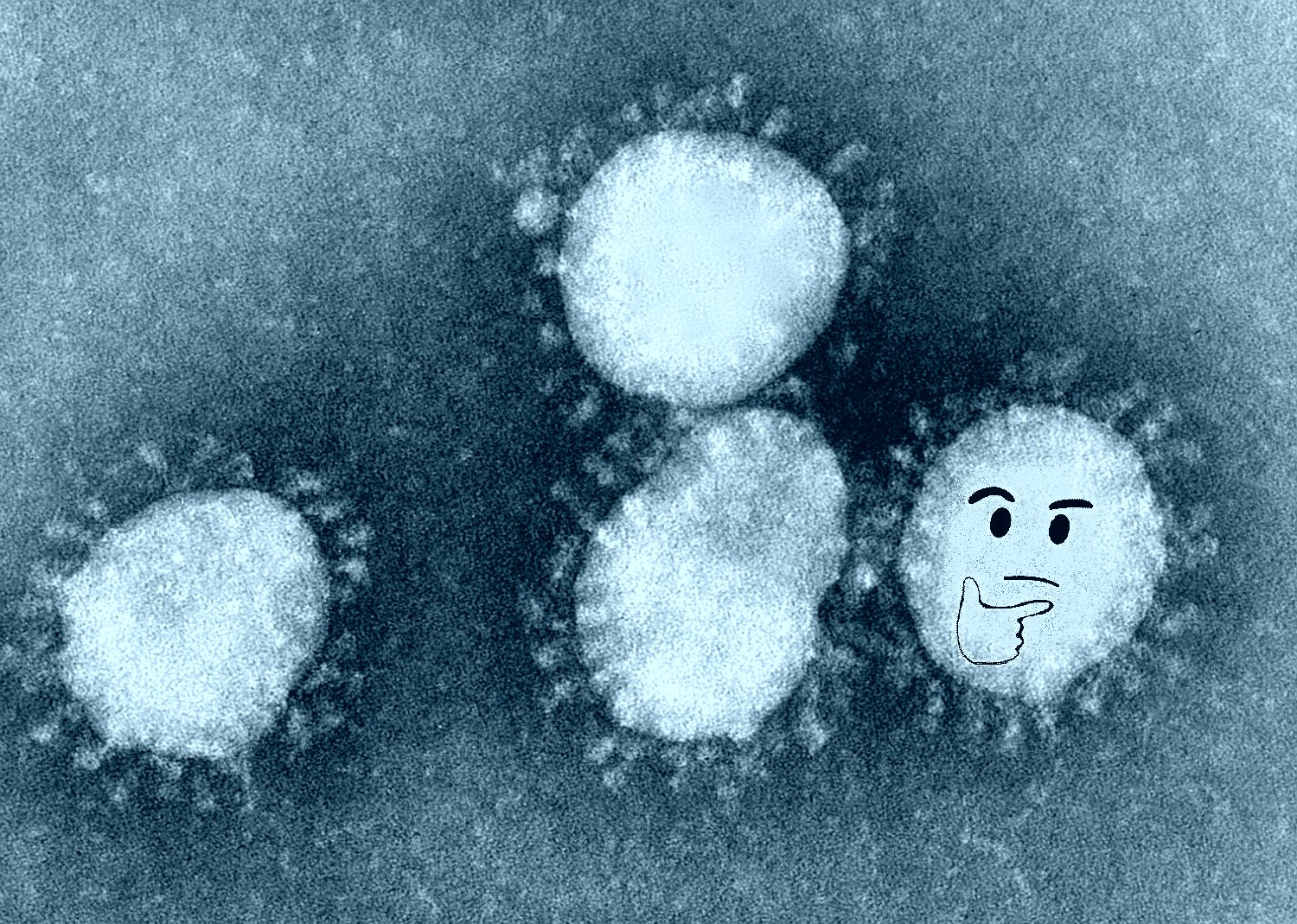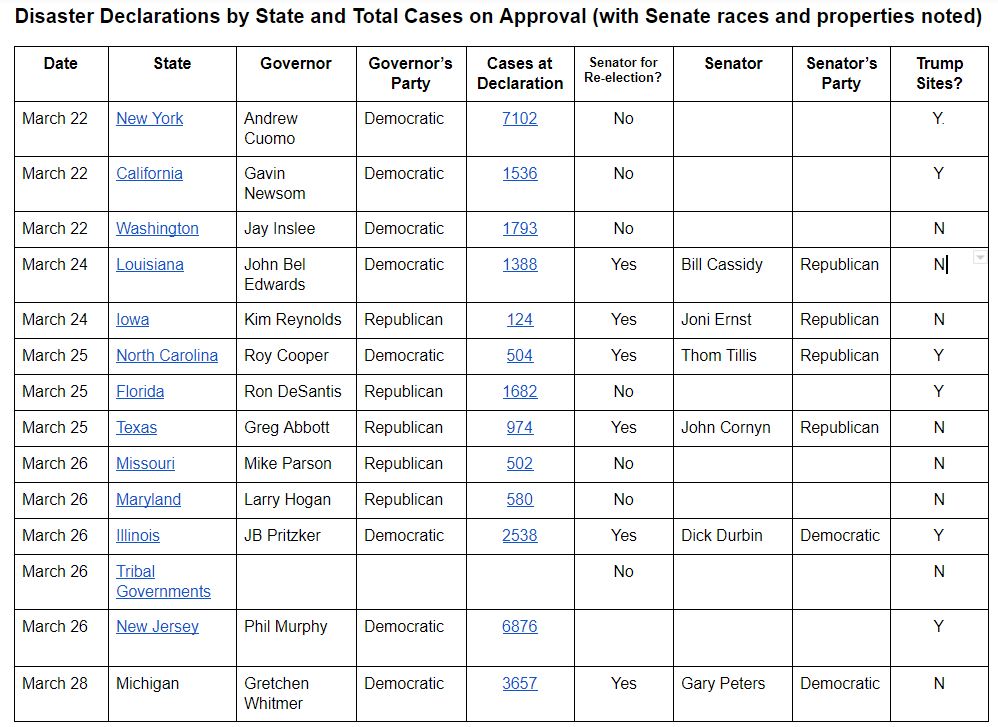Masked Up, Ready to Go (Nowhere)
[Check the byline, thanks! /~Rayne]
You’ve probably heard the U.S. Center for Disease Control is expected to reverse its position on the public wearing masks a little over a month after this meltdown on February 29:

I have no idea how parents with kids out of school will handle this; we need some sort of an exemption for parents to continue to work at home if they have children who would have been in school into June but whose schools have now closed for the rest of the school year.
I also think it’s too soon to lift the Stay-Home orders given how goddamned sloppy states like Florida have been in executing them. Spring breakers were still congregating this past week in some southern states which means these stupid fools who were exposed will travel home, get sick in 2-3 weeks, infect others during that time and a mini-wave of successive infections will follow that.
Anyhow…the CDC has acknowledged the larger role respiratory droplets play in infection. Many anecdotes from community acquired infections support this. From CDC:
“COVID-19 is thought to spread mainly through close contact from person-to-person in respiratory droplets from someone who is infected. People who are infected often have symptoms of illness. Some people without symptoms may be able to spread virus.”
There are two studies about viability of the virus causing COVID-19 on surfaces; the researchers also noted the hang time of aerosolized virus and its viability. This study is cited most often:
van Doremalen N, Bushmaker T, Morris DH, et al. Aerosol and Surface Stability of SARS-CoV-2 as Compared with SARS-CoV-1
March 17, 2020. doi: 10.1056/NEJMc2004973
https://www.nejm.org/doi/full/10.1056/NEJMc2004973
The active virus could hang in the air for as long as 3 hours according to this study, from which we can infer the exhalations of infected persons carrying the virus will also hang about.
This study found the respiratory material from infected patients could cover objects and surfaces all over a room:
Ong SWX, Tan YK, Chia PY, et al. Air, Surface Environmental, and Personal Protective Equipment Contamination by Severe Acute Respiratory Syndrome Coronavirus 2 (SARS-CoV-2) From a Symptomatic Patient.
JAMA. Published online March 04, 2020. doi:10.1001/jama.2020.3227
https://jamanetwork.com/journals/jama/fullarticle/2762692
While not about the virus underlying COVID-19, this paper discusses the exhaled infectious material and how far it spreads — nice graphics included, a nice read:
Bourouiba L. Turbulent Gas Clouds and Respiratory Pathogen Emissions: Potential Implications for Reducing Transmission of COVID-19.
JAMA. Published online March 26, 2020. doi:10.1001/jama.2020.4756
https://jamanetwork.com/journals/jama/fullarticle/2763852
Science writer Ed Yong at The Atlantic tries to summarizes everything in his article, Everyone Thinks They’re Right About Masks: How the coronavirus travels through the air has become one of the most divisive debates in this pandemic.
Yong notes as I have that countries which use masks more regularly — like Japan — have had lower rates of COVID-19. But these countries also were more aggressive about dealing with containment much earlier.
Need more perspectives? Molecular biologist Sui Huang of Institute for Systems Biology in Washington state has an overview in support of mask wearing at Medium; science writer Ferris Jabr has a pro-mask article at WIRED.
This DIY Cloth Face Mask page at Instructables has not only information to sew your own mask but discussion about wearing masks and filters in them. The page is changing fairly often because of feedback — it didn’t have filter information in February.
It’s important to think about masks not just as protection for yourself. It’s possible some of us have already had asymptomatic cases and may even be contagious as I type this. Wearing a mask can protect others.
In Asia wearing a mask is also seen as a sign of respect for others’ well-being. Americans have had a skewed perspective about masks and have until now viewed them negatively when worn outside health care settings as a hallmark of illness. We’re going to have to change that.
Because I’m in the at-risk group due to my autoimmune disorder, I have to wear a mask. Family members with heart disease and diabetes likewise need to wear masks. I’ve sewn my own for myself and family members alike. While the first masks I sewed for us were two-layer cotton, I’m now making another batch with non-woven poly fiber — baby wipes and cleaning wipes are just two examples of this fabric in use around us all the time. The non-woven poly inside a reusable fabric mask can reduce the amount of material shed or inhaled by the wearer beyond what two layers of cotton fabric can limit.
If you choose to wear a mask, leave surgical masks and N95 to health care professionals because shortages of these commercial masks are severe and likely won’t be relieved for more than a month. Make your own instead. There are plenty of How-To and DIY instructions out there for sewn and non-sewn masks.
If you do wear a reusable fabric mask, make sure to shut your eyes and hold your breath when taking a used mask off because it will have collected potentially infectious material. Immediately wash it thoroughly in hand soap and water — the soap is all that’s needed to deactivate any virus. Then wash your face and then hands carefully, again with soap and water. Rinse your mask well with water and hang to dry or put the mask in the wash with your other laundry.
If you see somebody at the grocery store picking up milk while wearing a mask, it might be me. I’ll be going nowhere else even with a mask long after April 30 except for the occasional but necessary venture out to pick up groceries.



